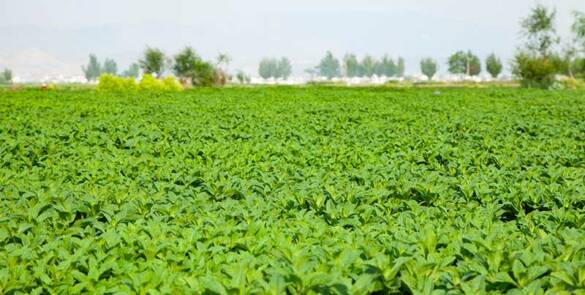Project Report For Mint Farming
Introduction
Project report for Mint Farming is as follows.
Mint farming in India is a significant agricultural activity that produces various species of mint leaves, which are widely used in culinary and medicinal practices. The main species grown are peppermint and spearmint, with the former being more popular due to its higher menthol content. Mint is a hardy perennial plant that can be grown in a variety of soils and climates, but it prefers well-drained soils and a cool, humid climate.
In India, mint is mainly grown in the northern and western regions, with the states of Uttar Pradesh, Gujarat, and Madhya Pradesh being the major producers.
The farming of mint in India is mainly done in small and medium-sized farms, and the plant is propagated through stem cuttings. The crop is usually grown in the monsoon season, and it takes about 3-4 months for the plant to reach maturity. After harvesting, the leaves are used for extraction of essential oil, which is widely used in the production of menthol and other mint-based products.

Mint farming in India has a number of benefits, both for farmers and for the overall economy. For farmers, it is a relatively low-cost crop to grow, and it can be grown on small plots of land. In addition, the demand for mint products, both domestically and internationally, is high and growing, making it a profitable crop for farmers to grow.
Get Completely Custom Bankable Project Report
The farmers use organic fertilizers and pesticides to maintain the quality of their mint crops. The leaves of the mint plant are used for making mint oil, which is a popular ingredient in many food and beverage products, such as chewing gums, candies, toothpaste, mouthwash, and many more. The oil is also used in the production of soaps, cosmetics, and perfumes. The mint oil is extracted from the fresh or partly dried leaves by steam distillation.
The oil contains menthol, menthone, and menthyl acetate, which are responsible for its characteristic aroma and flavor. The yield of mint oil varies depending on the species and variety of mint, as well as the growing conditions, but it typically ranges from 0.2% to 0.6% of the plant’s dry weight.
Market Potential Of Mint Farming
The market for mint is expected to increase at a CAGR of 5.74%, from US$5.770 billion in 2020 to US$8.527 billion in 2027.
Expenses

Product Cost Breakup

Reveneue Vs Expenses

Market Trend

Mint farming in India has the potential to be a profitable and sustainable industry. India is the second-largest producer of mint in the world, and the demand for mint and mint-based products, such as essential oils, is growing globally.
The country’s climate and soil conditions are well-suited for growing mint, and the crop is relatively easy to cultivate and maintain. One of the key drivers of the mint market in India is the increasing demand for natural and organic products, both in India and abroad.
The rising awareness of the health benefits of mint, such as its ability to freshen breath, aid digestion, and relieve symptoms of cold and flu, has also led to an increase in demand for mint-based products. Mint is a popular herb and is widely used in the food and beverage industry, as well as in the manufacture of personal care and home care products.
The demand for mint oil, which is used as a flavoring agent and fragrance in various products, is particularly high. India is one of the largest producers of mint oil in the world, and the country’s mint oil exports have been growing in recent years.
The major mint-growing states in India are Uttar Pradesh, Gujarat, and Madhya Pradesh. The majority of mint grown in India is used for the production of mint oil, and the major mint oil-producing districts are Kannauj, Farrukhabad, and Muradabad in Uttar Pradesh and Pudukkottai in Tamil Nadu.
